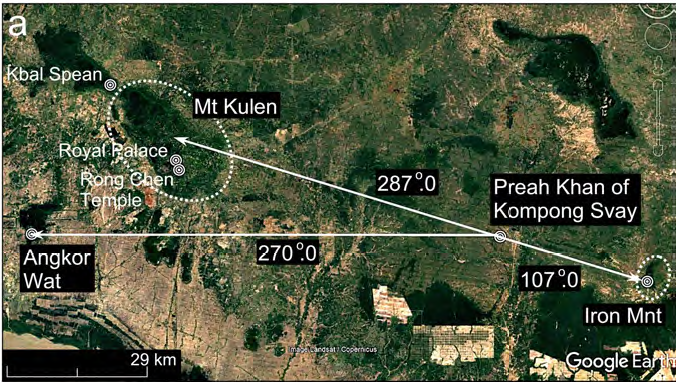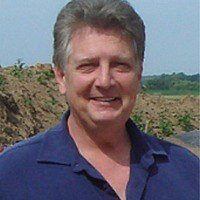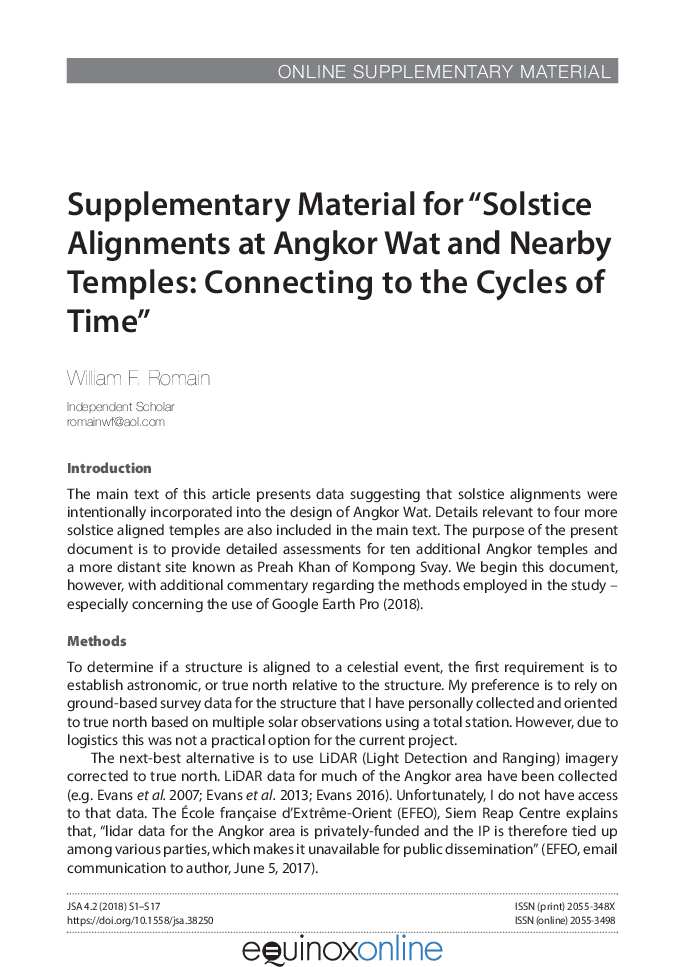Solstice Alignments at Angkor Wat and Nearby Temples: Connecting to the Cycles of Time
by William F. Romain
Comparative solstice alignement of seven major Angkorean monuments in relation to Phnom Kulen and Kbal Spean

- Publication
- Online Supplementary Material | EquinoxOnline | DOI https://doi.org/10.1558/jsa.38250
- Published
- 2018
- Author
- William F. Romain
- Pages
- 17
- Language
- English
pdf 2.1 MB
According to the author, “the data [presented here] suggest that Angkor temples were linked to the Sun through a sophisticated combination of solstice, equinox and zenith Sun alignments. Zenith alignments along the vertical axes of lotus temple towers established an axis mundi for each temple.
“Where visible equinox alignments occur (e.g. Angkor Wat, Bakong), processional movements along east – west avenues might have been timed to the equinoxes for maximum hierophanic effect. Based on the evidence provided above, solstice alignments were an important part of Angkor temple design. As also explained in the main text, however, solstice alignments were probably not for observational purposes. Rather, they seem to have been for symbolic purposes – presumably intended to link the temples to the dynamic aspect of the solar cycle.”
Tags: astronomy, archaeo-astronomy, Phnom Kulen, Kbal Spean, Bakong, Bayon, Angkor Wat, Preah Khan Kompong Svay
About the Author

William F. Romain
William F. Romain (Ph.D. (University of Leicester, 2004) is an archaeologist specializing in archaeoastronomy and ancient religions. He is a Research Associate with the Indiana University, Museum of Archaeology and Anthropology, Fellow of the Royal Geographical Society, The Explorers Club, and licensed private pilot.
William “Bill” Romain is a recipient of the Robert Converse award for outstanding contributions to Ohio archaeology and serves on the editorial board of the Midcontinental Journal of Archaeology. He is the author of three books about prehistoric Native American religion, and dozens of published articles. He has conducted archaeoastronomic fieldwork in the United States, China, Inner Mongolia, Tibet, Burma (Myanmar), and Cambodia. In his spare time he is a dedicated practitioner of Iaido.

